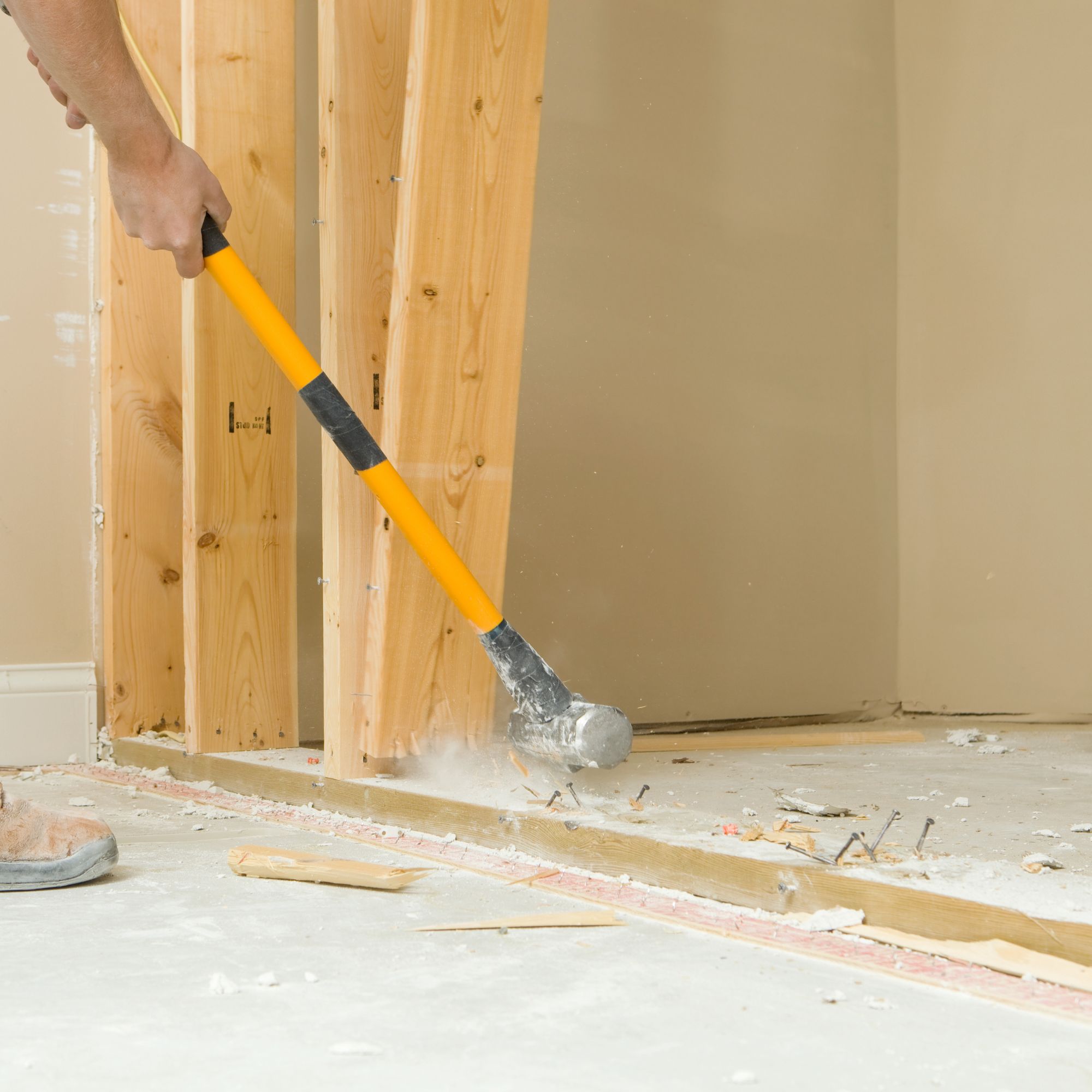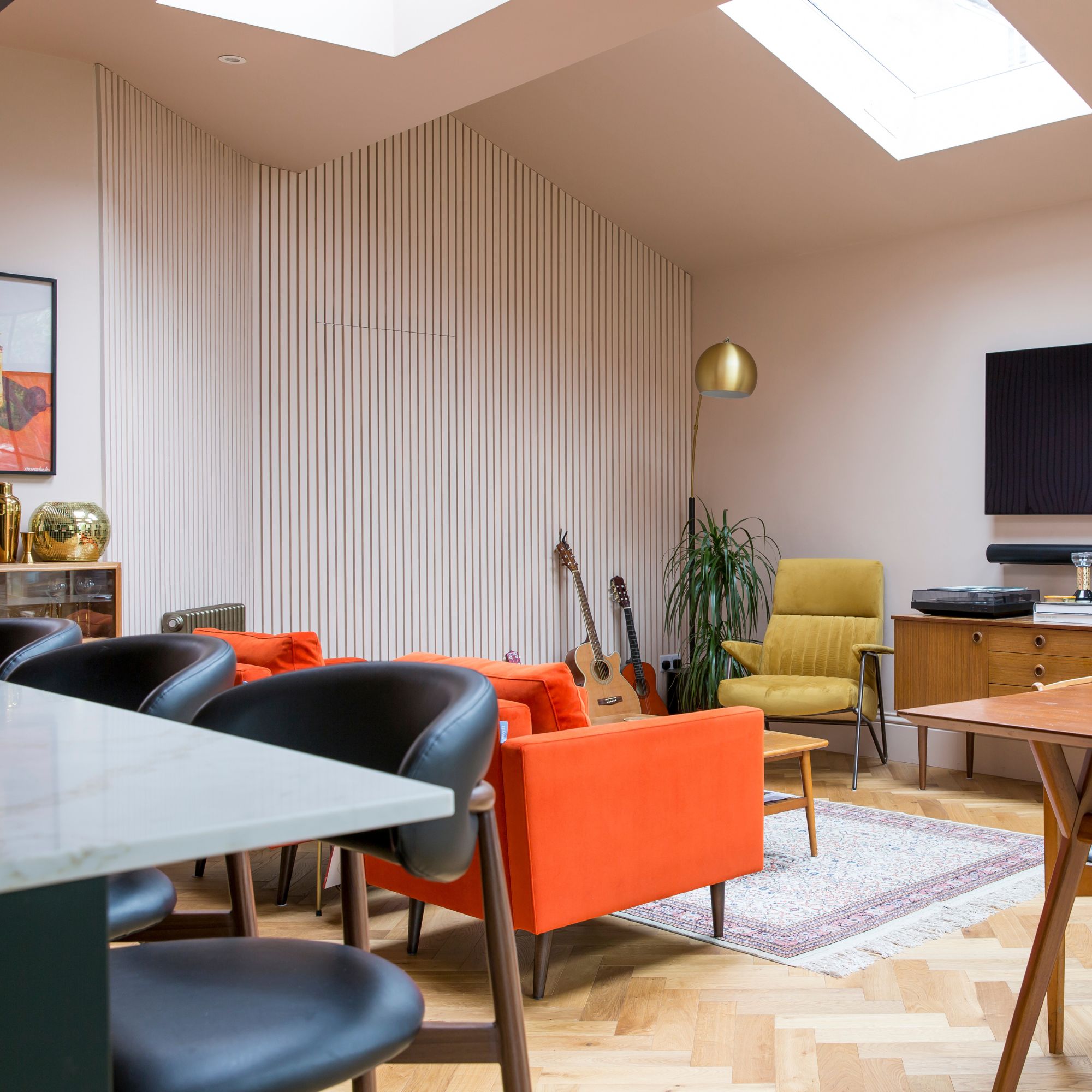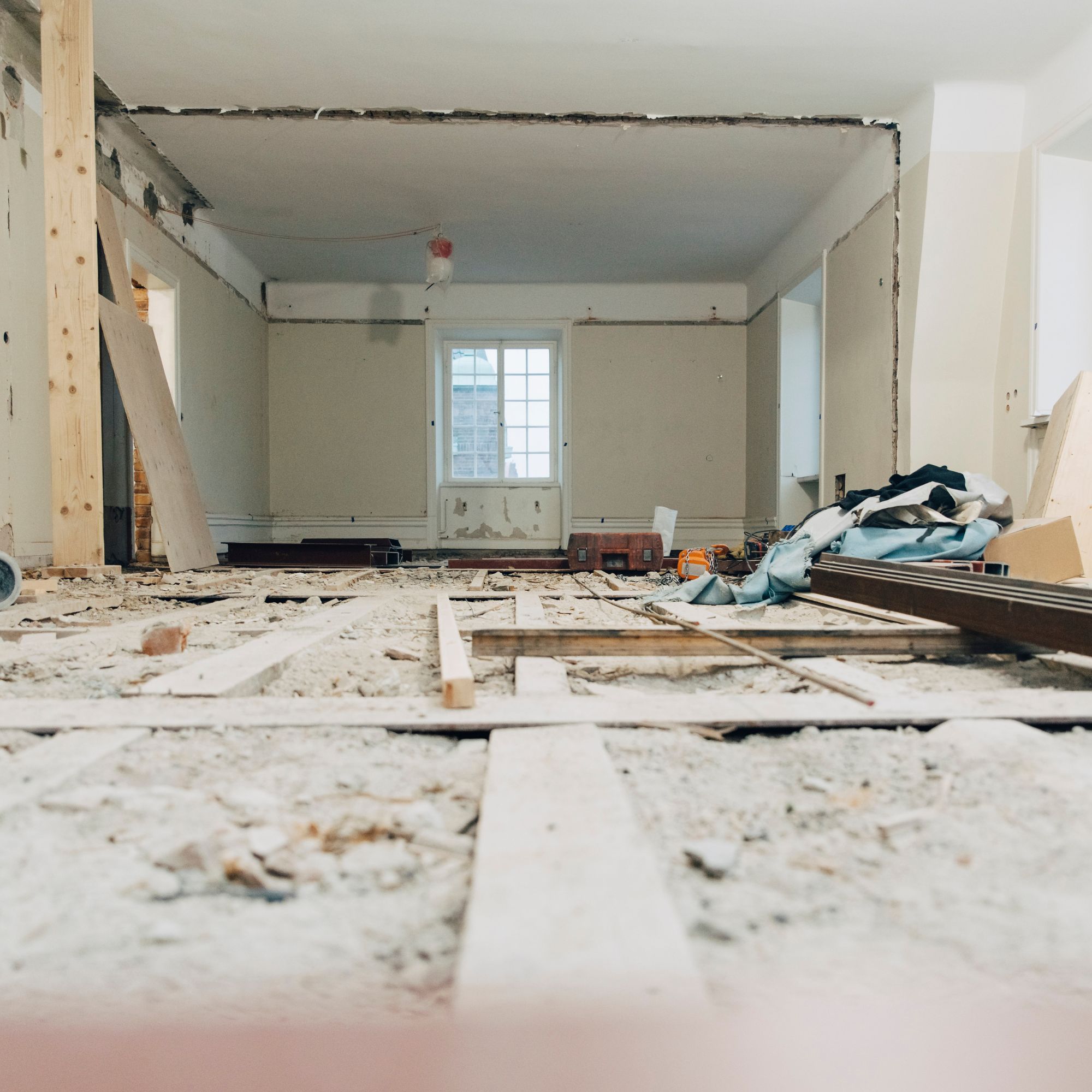Thinking of going open plan? Make sure you know how to correctly identify a partition wall before you start knocking down walls
Correctly identifying a partition wall is key if you want to embrace an open-plan layout


If you are planning on altering the layout of your home by moving internal walls, or removing them entirely, then you'll need to understand the different types of wall you could come across, including partition walls.
After all, the process of removing internal walls will depend on whether the wall is simply a partition wall or whether it is serving a more significant structural purpose.
To help you determine the kind of wall you have before you pick up a sledgehammer, I asked those in the know what exactly a partition wall is, as well as the key features to help you identify one in your home.
What is a partition wall?

Correctly identifying a partition wall will inform the process you need to follow in order to remove it
Before you even think about knocking down an internal wall, you will need to determine what kind of wall it is.
'A partition wall is an interior wall of a property that is non-load bearing, so it doesn’t support the weight of the structure above and is not necessary for the stability of the building,' says Mark Irving, building expert at Build & Plumb. 'These walls are typically used to divide areas of the home or provide aesthetic purposes.'
While less structurally significant than load-bearing walls, partition walls aren't always straightforward. Architect Níall Hedderman from Capital A Architecture explains: 'Partitions might seem like the most basic wall in a building but, given the variety of styles, ages and methods of construction across the UK, partitions can also be complex.
'It is possible to have brick partitions that don't carry any load and timber stud frame walls which do, and sometimes in the same building!
Sign up to our newsletter for style inspiration, real homes, project and garden advice and shopping know-how
'Older properties can have more than one type of partition wall, especially if the building has more than one floor. The lower floors might have brick partitions but the top floor could have timber stud walls between the rooms.'

Removing a partition wall will open up your home, allowing light to flood the space
If your property has undergone any remodelling work in the past, it's also possible that you could have partition walls made up of different materials, which can make identification more challenging.
'Newer homes increasingly use metal frames covered with plasterboard to form partitions. These have dense mineral wool inside them to reduce noise transfer between rooms,' adds Níall.
How do you identify a partition wall?

It's crucial you correctly identify the type of wall you have before you attempt to remove it. Get it wrong, and it could be a costly mistake
So how can you tell if a wall is a partition wall rather than load-bearing? There are a few signs to look out for that will give you a good indication.
'Firstly, a key way to identify a partition wall is through its location,' says Mark Irving. 'For instance, a partition wall is used in the interior of a property, not the exterior, so this can be a key sign.
'Furthermore, as these walls are non-load bearing they are commonly made from materials like plasterboard, so they may sound hollow when tapped. Simply, knock on your wall using your knuckle and if it sounds loud or hollow this can be a strong indication of a partition wall.'
Susie Pfeiffer, Interior Designer at Pfeiffer Design adds: 'To identify a partition wall, check its thickness: partition walls are usually thinner than structural ones, often under 100mm. They're also commonly made of stud and plasterboard, which offers more flexibility and is lighter weight than masonry.'
However, while these can be good indicators as to whether a wall is simply a partition wall, the only way to know for certain is to get confirmation from a structural engineer or builder. After all, if you get it wrong, and end up removing what you think is a partition wall but it turns out to be load-bearing, you could face serious and expensive consequences.
Is it easy to remove or alter a partition wall?

If a wall you think is a partition wall turns out to be load-bearing, you'll need the help of a structural engineer if you want to remove it
Once you are sure you are dealing with a partition wall rather than a load-bearing one, then it can be relatively easy to remove or alter as you wish. It is usually within the skillset of a competent DIYer.
You'll need to be mindful of any wires or pipes that might be located in the wall. This bestselling stud finder from Amazon (£19.54) will help you find them. These will need to be decommissioned before you try to remove the wall.
If you have a radiator on the wall you want to remove, you may want to consult with a professional, especially if you want to relocate this to another wall.
FAQs
How much does it cost to remove a partition wall?
When it comes to how much it costs to remove an internal wall, the good news is that partition walls are usually more affordable walls to remove. Load-bearing walls will require professional involvement and so cost more to remove.
If you task a builder with removing the partition wall, then it can usually be done in a couple of days, and will cost in the region of £800-1,000 depending on your builder's day rate.
If this falls into your DIY remit, then your costs will be much lower. But remember you'll need to budget for any materials and tools you may need for the job.
As with any kind of renovation work, make sure you only DIY the tasks that you can complete safely and competently. Biting off more than you can chew in an effort to save money will usually end up costing more in remedial work.
Can I remove a partition wall myself?
If you are a confident and experienced DIYer, then you may well be able to knock down a non load-bearing partition wall yourself. Just heed these wall removal lessons learned from an experienced renovator.
If however the job looks to be more complex, or if you aren't sure if the wall is load-bearing or not, then it's best to call in the professionals.
Before you plan on knocking down any internal wall, make sure you carefully consider whether it's the right option for your home, especially when it comes to an open plan kitchen vs closed plan kitchen.

Sarah Handley is Ideal Home’s Renovation Editor. She joined the team full time in September 2024, following three years of looking after the site's home finance content. As well as all things renovation, Sarah also looks after our Home Energy content, which covers all aspects of heating and insulation as well as tips on how homeowners can reduce their energy usage. She has been a journalist since 2007 and has worked for a range of titles including Homebuilding & Renovating, Real Homes, GoodtoKnow, The Money Edit and more.